Different Types Of Green Japanese Maples. There are many different types of Japanese maples with different coloured leaves which generally vary from burgundy to green in colour. The varieties that are generally most popular in home gardeners are those with Green leaves. The shade of these leaves can variety along with the height of the tree. The aim of the article is to provide detail on the common varieties to make it easy for you to find just the right one for your garden.
To make it easier a table have been provided below which summarizes many of the green-leaved maples available for sale. For information on the specific varieties see the section below.
| Plant | Height | Width | Zone | Autumn Leaf Color |
| Acer japonicum ‘Vitifolium’ (Full Moon Maple) | 10 to 15 ft | 10 to 15 ft | 5 to 8 | Red and Yellow |
| Acer palmatum ‘Arakawa’ | 20 to 25 ft | 18 to 20 ft | 5 to 9 | Yellow |
| Acer palmatum ‘Beni-Kawa’ | 5 to 15 ft | 5 to 15 ft | 5 to 9 | Yellow |
| Acer palmatum ‘Butterfly’ | 7 to 12 ft | 4 to 8 ft | 5 to 8 | Red/Purple |
| Acer palmatum ‘Crippsii’ | 4 to 5 ft | 4 to 5 ft | 5 to 8 | Orange |
| Acer palmatum ‘Eddisbury’ | 10 to 15 ft | 6 to 10 ft | 5 to 8 | Yellow/Crimson |
| Acer palmatum ‘Emerald Lace’ | 10 to 13 ft | 10 to 13 ft | 5 to 9 | Red/Purple |
| Acer palmatum ‘Seiryu’ | 10 to 15 ft | 8 to 12 ft | 5 to 9 | Yellow |
| Acer palmatum Dissectum Viride Group | 6 to 10 ft | 6 to 10 ft | 5 to 8 | Yellow |
| Acer shirasawanum ‘Autumn Moon’ | 8 to 15 ft | 8 to 18 ft | 5 to 7 |
Acer japonicum ‘Vitifolium’ (Full Moon Maple)
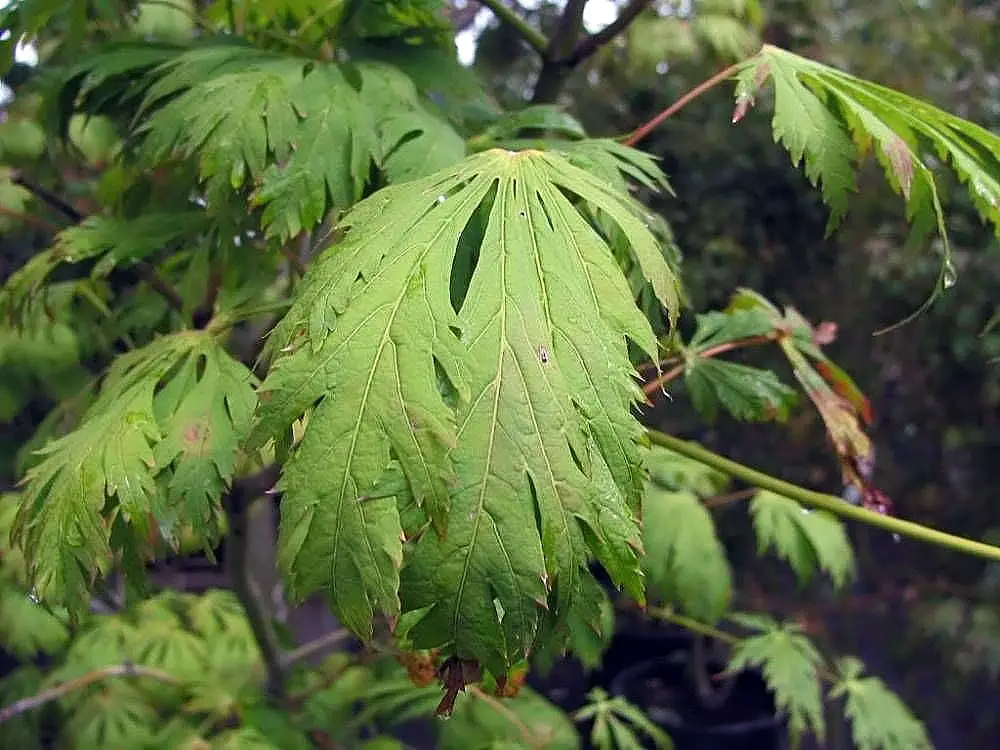
The award-winning Acer japonicum ‘Vitifolium’ (full moon maple), known for its grape-leaf-like leaves, is a large, dense, deciduous shrub or a small tree of an upright species that become wider and rounder as it ages. The bronze, large, round palm-shaped leaves that appear in the spring ripen to dark green color as the season progresses. In autumn, before falling, they change beautiful shades of gold, crimson and bright red, this small dense maple really stands out in the landscape. Small red flowers appear in front of the leaves in the spring, giving way to samara, which ripens at the end of summer to early autumn, adding decorative value to the exposition.
- Winner of the prestigious Horticultural Society’s Award of Garden Services for outstanding qualities
- The plant grows to a height of 10 to 15 ft and 10 to 15 ft wide
- Partial shade is preferred but full sun is tolerated if the summers are not too hot.
- This plant is easy to grow on moist, biologically rich, slightly acidic, well-drained soils.
- Mulch helps to protect it moisturizes the soil and keeps the roots cool.
- Although full sun is tolerated, the leaves can burn out in full sun during hot southern summers.
- Ideal as a model plant in summer gardens, city gardens or Japanese gardens.
- Small maintenance, this plant needs small pruning.
- If pruning is required, do pruning in the dormant season and avoid pruning in the spring
- the juice is flowing. Fertilize in the spring until the leaves are formed.
- It can be affected by scales of horse chestnut, aphids, verticillium wilt.
- Multiply by grafting or coniferous cuttings
Acer palmatum ‘Arakawa’

Acer palmatum “Arakawa”, known for its remarkable bark, is a powerful, deciduous, towering tree, decorated with delicate leaves made of palm leaves, each of which is decorated with 5-7 thin leaf tips. The leaf, which is fresh green in the spring, retains its color throughout the summer, and then gradually turns into a bright golden yellow in the fall. In adult specimens, 3 to 5 years old, the bark becomes rough and crusty with folds, cracks and fissures, which represent decorative interest throughout the year. A very interesting Japanese maple, which is perfect for use in Bonsai and for landscaping. The tree grows up to 20-25 ft high (600-750 cm) and 18-20 ft (540-600 cm) wide.
Acer palmatum ‘Beni-Kawa’
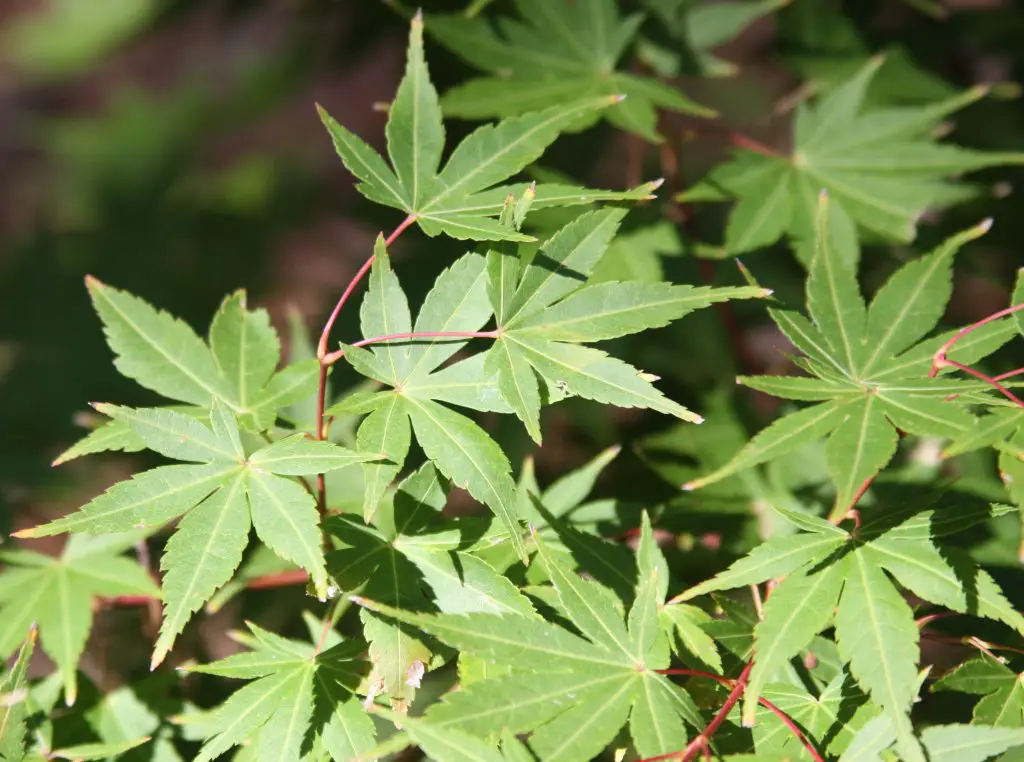
Like the very popular “Sango kaku”, Acer palmatum “Beni Kava” is famous for its shining salmon-red shell and bright autumn color. This deciduous shrub or small tree with leaves that appear in the spring, sometimes with a slightly red tone amd 5 to 7 lobes on the leaves. The leaves ripen to a medium-green color in the summer and warm up to an attractive golden-yellow color in the fall, before falling to the ground.
They fall off to they reveal a bright but deep salmon-red bark on young branches and twigs. This provides a much-needed splash of color in winter. This slow-growing maple has the shape of a vertical vase and is an excellent tree for the four seasons. The plant reaches up to 5 to 15 ft (150-450 cm) in height and width.
Acer palmatum ‘Butterfly’
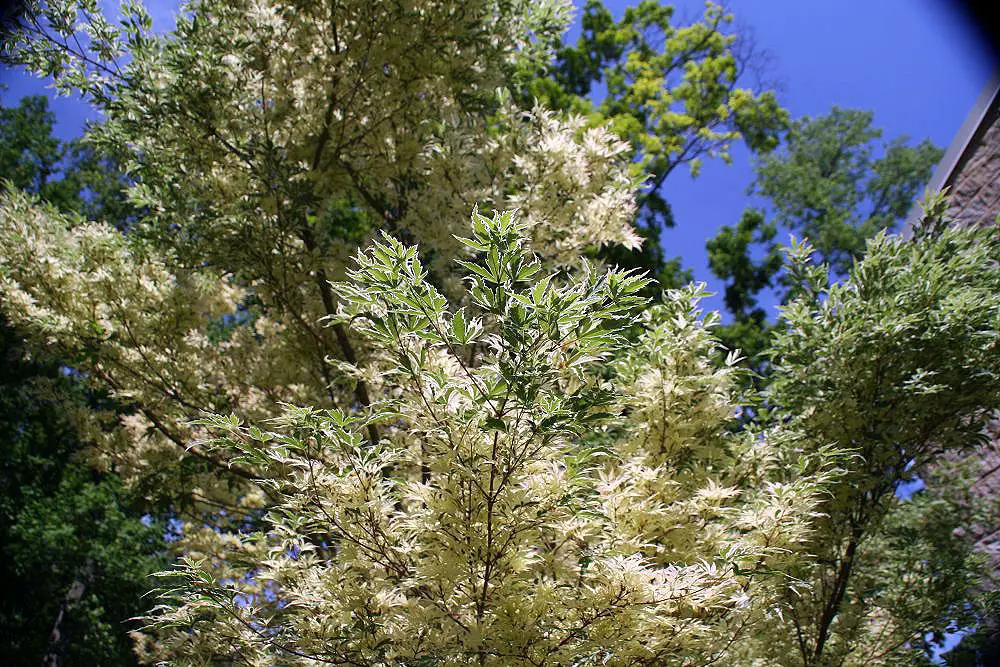
Acer “Butterfly” is an upright, deciduous shrub with silver leaves with 5 to 7 lobes leaves. The leaves may have a touch of pink are variegated leaves. In autumn the thinly curved, pale part of the leaves turns from red to purple before falling to the ground. This slow-growing Japanese maple has an elegant vase shape and is ideal for containers or small gardens it grows to a height of 7 to 12 feet (210 to 360 cm) and a width of 4 to 8 feet (120 to 240 cm).
Acer palmatum ‘Crippsii’
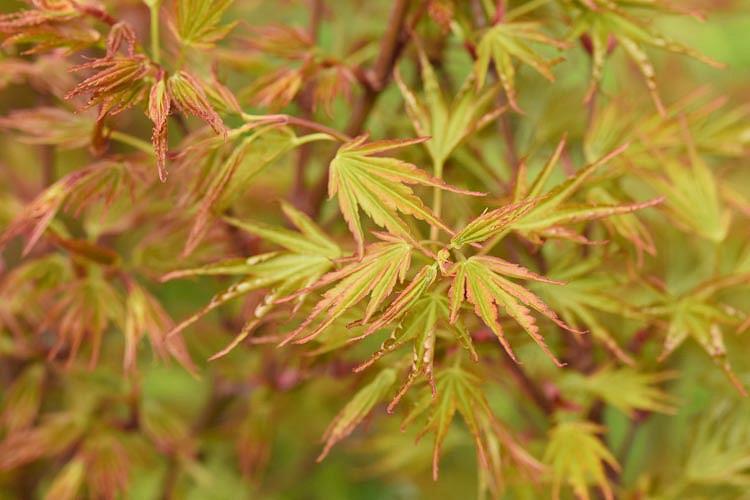
Acer ‘Crippsii’, produces five lobed leaves with a deep emerald-green color on a compact deciduous tree. In autumn, before falling to the ground the leaves turn a bright orange color. This slow-growing dwarf Japanese maple has the shape of a vase and is ideal for containers or small gardens. it grows to a height and width of 4-5 ft (120-150 cm).
Acer palmatum ‘Eddisbury’
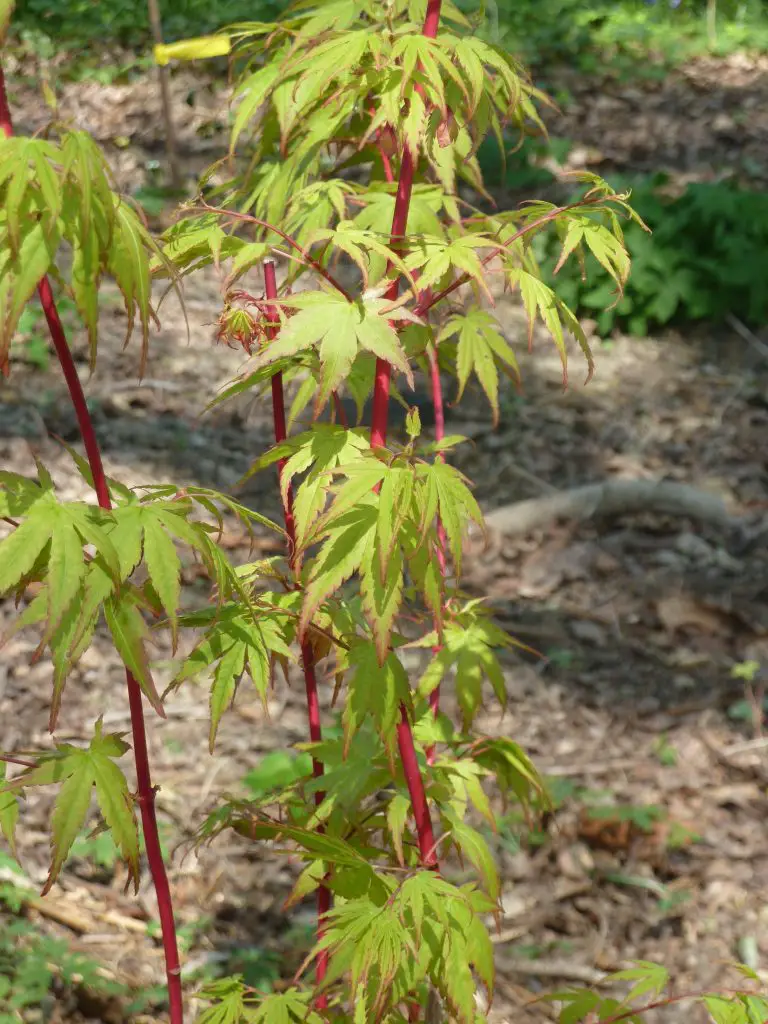
The award-winning Addisbury (coral-shelled maple) of Acer Palmatum, known for its bright red bark and the color of autumn, is a large deciduous shrub or a small tree that will make a big difference to anyones garden. They have a 5-petaled leaves starts as a bronze green and ripens into fresh green in the summer. The leaves turn golden yellow and then crimson before falling to the ground in the fall.
When they fall off, they reveal a bright red bark on young branches and twigs, adding a much-needed splash of color to winter landscapes. This maple, which is strong, has an upward habit that expands as it ages, creating the all-season tree that all gardeners create because it decorates the landscape. The plant grows to a height of 10 to 15 ft tall (3 to 4. 5 m) and 6 to 10 feet wide (2 to 3 m).
Acer palmatum ‘Emerald Lace’
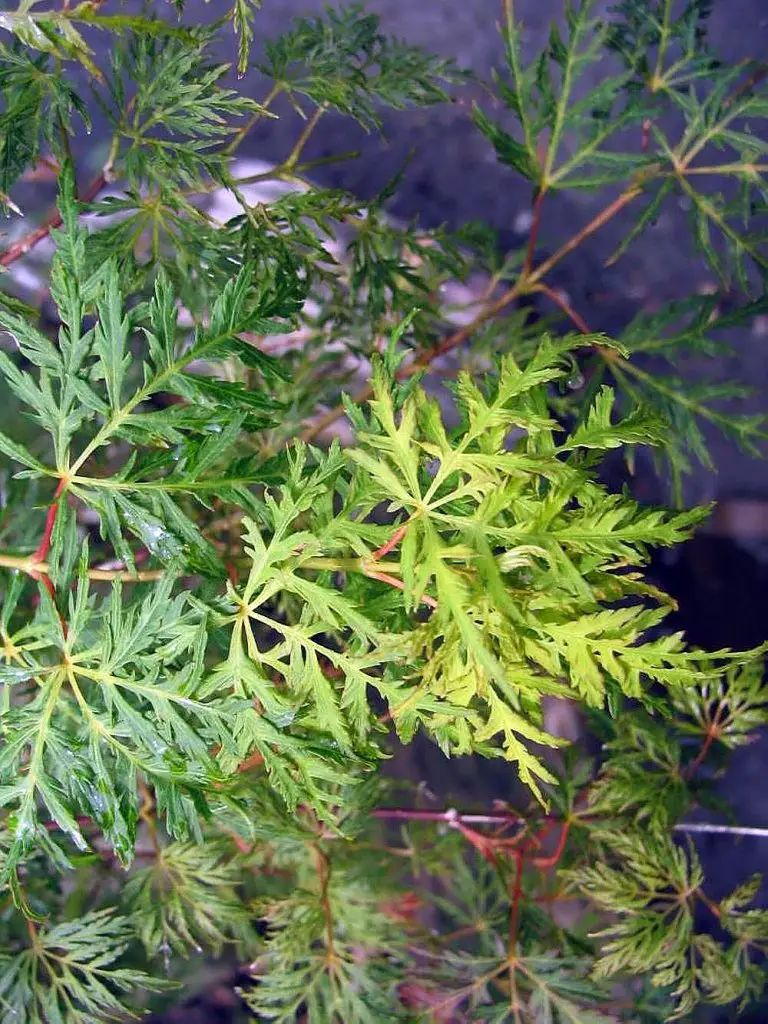
Acer Palmatum “Emerald Lace” is an award-winning variety that is a fast-growing, deciduous, small tree with deep, emerald-green, lacy leaves of exceptional beauty. In the spring, small, deeply cut, cut leaves become lemon-green in color before ripening to a dark emerald-green color as the season progresses before turning a burgundy-red in autumn.
This semi-erect Japanese maple is perfect for a border of shrubs, and its compact shape makes it suitable for containers. It grows to a height of 13 ft (3.9m) and a has a similar width.
Acer palmatum ‘Seiryu’
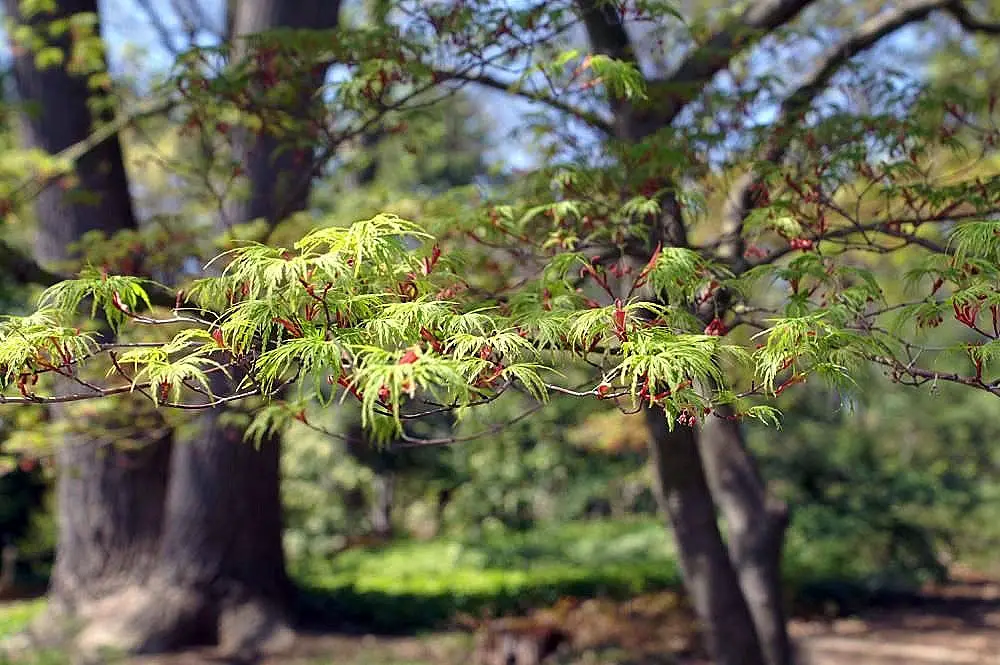
Acer palmatum ‘Seiryu’ is a medium-sized shrub of great beauty with small, deeply cut, trimmed leaves. A delicate spring leaf becomes lemon-green with reddish buds, and then matures to a light green with reddish edges. In autumn it ripens to a magnificent golden, pale yellow. This upright maple has a wide, columnar shape and stands out against the background of the landscape. Due to his outstanding qualities, he was awarded the prestigious Horticultural Services Award of the Royal Horticultural Society. It grows up to 10 to 15 ft in height (300 to 450 cm) and has a width of 8 to 12 ft (240 to 360 cm).
Acer palmatum Dissectum Viride Group
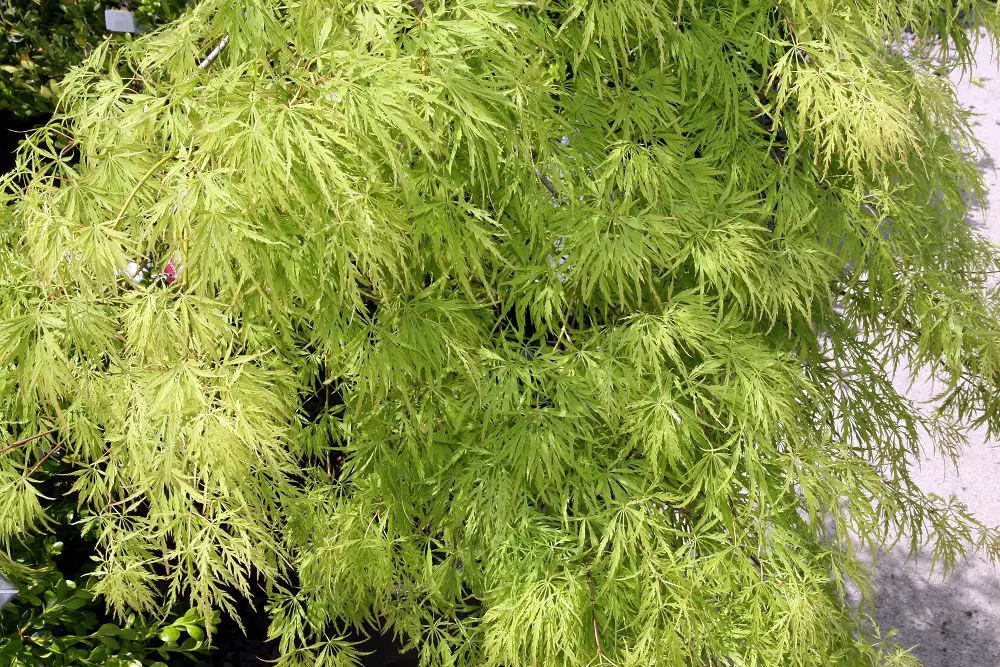
The Acer palmatum Dissectum Viride Group or Acer ‘Viridis’ is a dwarf Japanese maple that is often multi-stemmed and has a low spreading growth habit. The heavy branches that form an elegant, domed pattern over time. The leaves have very long slender lobes that are a bright green color in spring and summer.
In autumn, they warm up to a golden yellow with the odd burst of crimson appearing before the leaves fall to the ground. This strong and adaptable Japanese maple is an excellent choice for the patio. It grows to 6 to 10 ft tall and wide (180-300cm).
Acer shirasawanum ‘Autumn Moon’
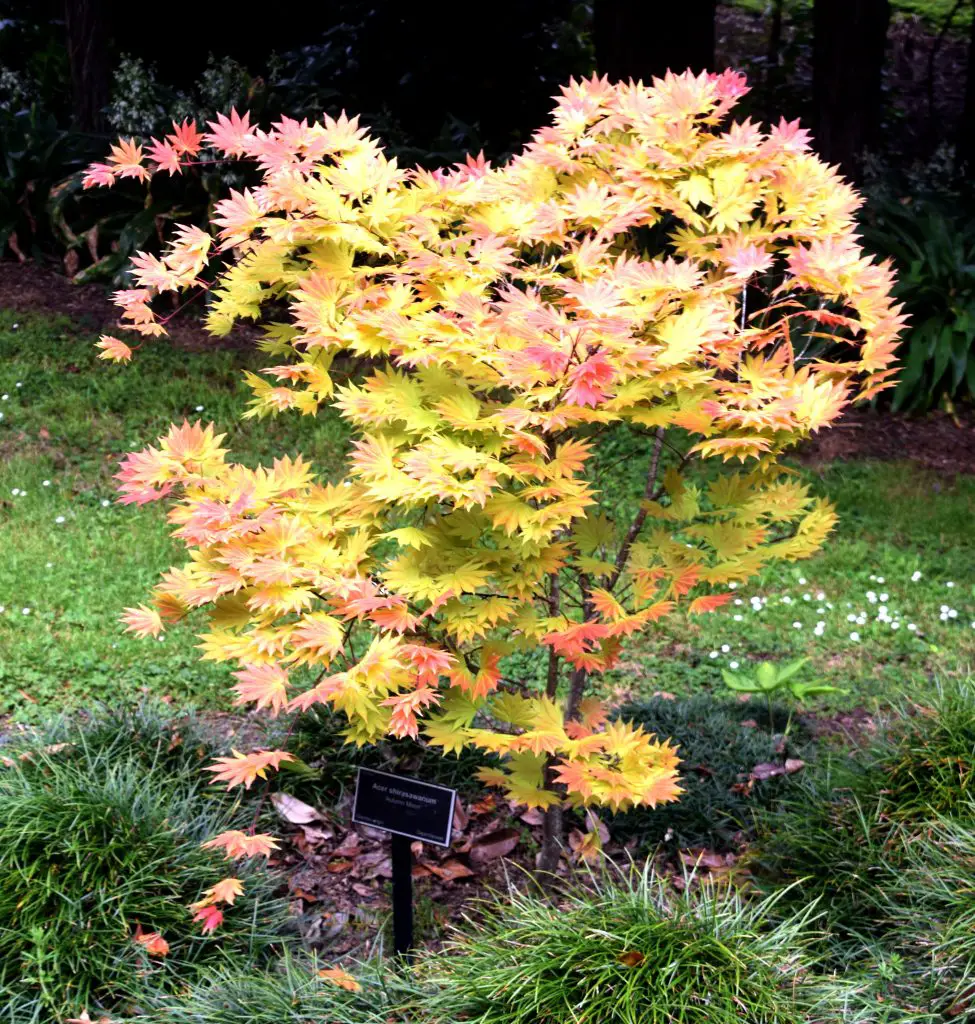
Acer shirasawanum maple “Autumn Moon” (Full Moon Maple) is a bushy tree known for its beautiful summer and autumn leaves. Bright yellow or chartreuse, palm-shaped rounded leaves, which appear in the spring, are decorated with 9 to 11 petals, painted in an unusual burnt-orange color. These colors are strongest in full sun or very light shade. In autumn they turn into a rich orange and red.
This unique slow-growing maple variety is ideal for small gardens or containers it grows to between 8 to 15 ft tall (240-450 cm) and 8 to 18 feet (240-540 cm) wide.
How Are Grown Japanese Maple
Maple can be planted almost at any time of the year, but buying a plant in the fall will allow you to see the true color of the autumn leaves, without relying on the photo on the label. Ask the nursery staff if the maple is also grown locally. If it grew in a much colder place, then in the coming years it is unlikely to repeat the intensity of the autumn colors in your warm climate.
Choose a place with full sun in cooler climates, but with moldy afternoon shade in warmer areas. Japanese maples are frost-resistant, but they need protection from the wind (especially in summer), as it can dry the leaves and cause burning of the tops.
Planting Japanese Maples
Prepare the soil using fertilizer, compost, and some organic materials such as certified organic granular fertilizer. Dig a pit twice the size of the root ball and plant the plant. Spread organic mulch around the base to keep weeds at bay and keep the soil moist. Provide regular deep water until it settles, especially in the hot season.
On Going Maintanence
Japanese maples naturally retain a beautiful shape, are generally slow growing and therefore rarely require pruning. If you still want to prune it is best do this until the middle of winter, when the plant sheds leaves. When pruning removal diseases, dry and dead wood from the tree.
In terms of fertilization and care of maples it is best to feed it in spring and autumn with a small amount of fertilizer or certified organic granular fertilizer. Additionally, it is important to ensure that the plant receives plenty of water as Japanese maples do not really like hot dry conditions.
In terms of pests and disease Japanese maples are rarely affected. However, aphids and ticks can cause problems, but can be easy to controls with eco-oil. Other problems include borers which can attack the trees when they are constantly experiencing stress as a result of heat and water). If this happens, cut and dry the infected branches out of the plant.
Relevant Articles
12 Tips To Boost Your Garden Output
10 Ways To Make Your Vegetable Garden Look Beautiful
7 Easy Steps To Creating An Orchard In Your Own Yard
What Is A Chinese Maple? How Does It Differ From Other Maple Trees?
